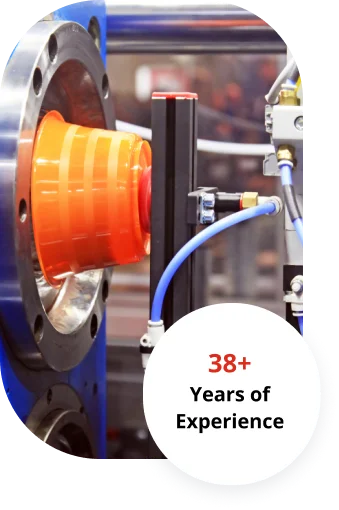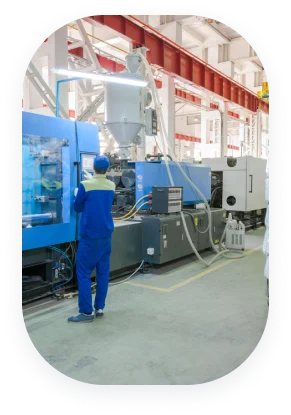
Lighthouse ERP
Injection Moulding,Disposables & Films Industry
Simple to Use
Easy to Implement
Flexible to Customized Solution

Injection moulding is a very common technique in the plastic sector used to make large volumes and accurate plastic parts. The technique has three main stages: product design, mould design, and manufacturing process. Sub-process such as mould specifications and raw materials selection is part of each stage, which determines product quality and manufacturing effectiveness.
Handling these phases manually usually causes delay, miscommunication, and errors in data, Manufacturing ERP software eliminates such problems by putting all key functions such as inventory, production, sales, procurement, and quality into one system. This helps in having smooth data flow and improved coordination between departments.
For the injection moulding industry, ERP helps with production planning, mould tracking, material management, and quality control, resulting in fewer delays and consistent output.
Lighthouse ERP has a specific solution for injection moulding, plastic pipes, and woven-sack production. Decades of experience since 1987, it provides solutions to actual issues such as downtime, scarp, and dispatch holdups that assist manufacturers in enhancing efficiency and productivity.

Manual scheduling of manufacturing and material tracking result in increased cycle times, inefficient mould utilization, and lower equipment usage.
Lack of centralized data across multi-location setups impacts inventory sync, dispatch reliability, and on-time decision-making.
Lacking a specific ERP for plastic production, finance departments are exposed to cost analysis, regrind tracing, and profitability reporting errors.
Without real-time dashboards, scrap rates, tool wear, and downtime trends go unchecked, impacting production quality and output.
Guess-based planning leads to overstock or shortages, disrupting manufacturing flow and resulting in higher holding costs.
Without mold tracking systems, tool maintenance gets missed, leading to breakdowns, production delays, and quality issues.
When procurement, production, and inventory teams operate in separate compartments, sharing data becomes slow affecting order processing and delivery timelines.
Injection molding ERP software automates job scheduling, raw material reuse, and tracking mold, minimizing downtime and enhancing machine performance.
ERP for injection moulding manufacturers centralizes operations, facilitating real-time coordination among plants, warehouses, and sales teams.
Advanced ERP costing modules determine material usage, scrap, and machine-wise efficiency that enables enhanced budget control and margin expansion.
Manufacturing ERP solutions provide dashboards for tracking KPIs such as shift output, tool wear, and downtime to enable plants to stay proactive.
ERP generates accurate purchases based on BOMs and usage patterns, eliminating shortages and reducing surplus inventory.
Tracks moulds along with complete maintenance history and usage records to prevent failures, lower idle time, and enhance tool longevity.
With embedded modules, manufacturing ERP breaks down departmental silos and accelerates approval, purchasing, and dispatch cycles.
Create unlimited, pre-defined Bills of Material tailored to different production processes and product types.
Track and validate raw material consumption across batches to ensure accurate inventory and cost control.
Plan daily or periodic material needs based on plant, loom, shift, and output item specifications for optimized procurement.
Monitor scrap rates and manage regrind usage, including flash, runner, and sprue material, even if not listed in the master inventory.
Define production schedules machine-wise and period-wise using BOMs, enabling detailed daily production targets.
Log and analyze machine-wise, plant-wise, and supervisor-wise downtime to minimize disruptions and improve uptime.
Manage amortization challan-wise and item-wise with automated break-up calculations for better cost allocation.
Track mould stock, in/out registers, and excise details with full visibility into mould usage and availability.
Generate weight-wise stock statements for finished goods, including bank stock reports for better financial reconciliation.